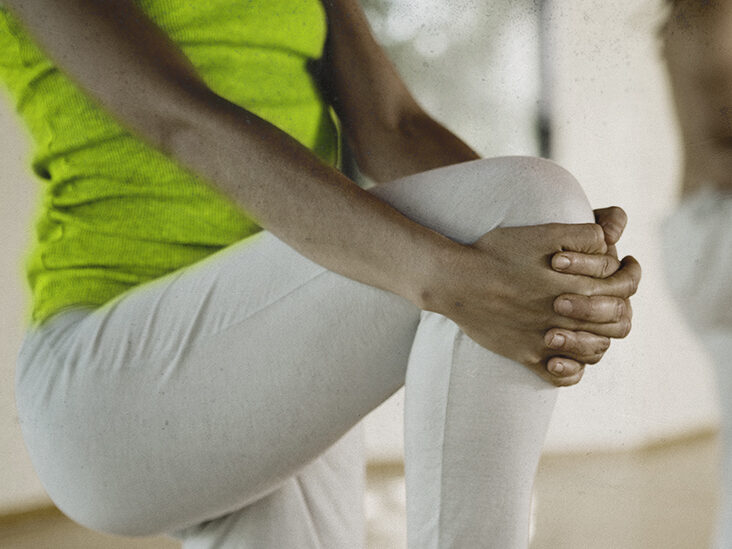
Eye yoga starts with relaxing your eyes and taking deep breaths. This exercise is extremely effective in relieving headaches. This exercise should be performed with complete relaxation. Hold your hands on your eyes for about ten second each. Keep going for as long as possible. This can be done several times per day. You may find it beneficial to repeat the exercise more often. Eye yoga should always be done every day to ensure optimal eye health.
A key step in eye yoga practice is to learn how to focus your attention. This exercise will teach you how to shift your attention between distant and near-by focal points. This helps your eyes become more focused. You can simply take a deep inhale, close your eyes, and move the thumb toward your nose. Repeat this process ten times per day. This exercise will help you adjust your eyes to changes in light. It will also teach you how to gently direct your gaze, which will lead to spiritual insight.

You will notice a change in your vision during this exercise. The dizziness will eventually fade. These eye-yoga exercises will allow you to notice a wide range eye movement. This will make your eyes more flexible, stronger, and more flexible. Practicing these techniques will improve your posture, balance, and attention, which will be a huge benefit to your overall health. You can also try these eye yoga moves.
Palming, another method of eye yoga, is also an option. It is a method of rubbing the eyelids to relax them. Tibetan yogis created this method. To do so, the hands are held over the eyes. Your optic nerve may be overstressed if you feel flickering light. The flickering lights will disappear when you remove your hands from the surface. Continue to perform this exercise until the feeling stops.
The second eye yoga exercise is palming. Palming refers to placing your palms above the left eye. The fingers that rest on your forehead should touch your cheekbones. You can also use the palming exercise to reduce discomfort from excessive screen time. To avoid damage to your eyes, you should first take off your glasses. After you have removed your lenses, you are able to perform the thumb lift exercise. You should focus your attention on your thumb during this exercise.

Palming is another eye yoga exercise. While performing this exercise, the Tibetans held their eyes in their hands. The palming they do has a direct effect upon the eye's muscles. This technique should be practiced several times daily to get the best results. The exercises should be performed several times daily. You can do the exercises during the day, or before bed if you don't have the time.
FAQ
What is butter good for?
Butter is a great source of saturated fats. This type of fat contributes to healthy skin, hair, and stronger bones.
Vitamin K in butter also prevents bleeding from cuts, bruises and other injuries. Vitamin K works together with vitamin C to prevent bruising.
Butter is rich in minerals such as calcium, potassium, and phosphorous. These minerals promote stronger bones, teeth, and teeth.
Butter is not without its flaws. Butter contains high amounts of cholesterol. Some studies show that consuming too much cholesterol may increase the risk of developing cardiovascular disease.
Butter also contains high amounts of saturated fat, which contributes to obesity and increases cholesterol.
Butter can be spread on bread, but you don't have to dip it into soups or salads if you absolutely must. Bread absorbs more oil that pasta and potatoes.
Which workout is best for men?
The answer to your question depends on the type of information you seek. Cardio workouts are great if you're looking to lose weight. They burn calories much faster than strength-training exercises.
Strength training, on the other hand, is better if you are looking to increase muscle mass.
Both types can be used to improve your overall wellbeing.
If you are looking to lose weight quickly, I recommend HIIT or sprint-interval training. This type helps you burn fat quickly, by increasing your metabolism. This type of training also increases your endurance, allowing you to train even when you are tired.
What is a good gym routine for you?
You must exercise regularly to stay fit. It doesn't make a difference what kind of activity you choose. As long as you do it often, it will be beneficial. The most important thing is consistency. To achieve success, you need to persevere for a long time.
Begin by walking for a few minutes each day. You can gradually increase the amount of exercise you do until you have 30 minutes each day. This could be running, biking, swimming or weight training.
You should try to ensure that you exercise most days of the week. If you have a valid reason to skip a session, it is best not to.
When exercising outside, make sure you have the right clothing and shoes. You should also consider the weather conditions that could affect your ability exercise safely.
When you exercise, make sure you are drinking plenty of water. Avoid drinking alcohol during this time because it can cause dehydration. Caffeinated beverages such as tea, coffee, and cola should be avoided. They can provide energy, but they also dehydrate.
You might feel tired when you start to exercise for the first time. But if your workouts are continued, you will feel more energetic.
What diet supplement is best to lose weight?
Losing weight requires both diet and exercise. Some people find that supplements can help them along the journey.
A few studies have suggested that omega-3 Fatty Acids might help weight loss. Omega-3s are essential fats that are important for brain function and cell membrane integrity. They can be found in seafoods like salmon, tuna or shrimp, as well as cod liver oil.
Other research suggests that green tea might be beneficial for weight loss. Green tea has catechins, which are antioxidants that can help increase metabolic rate and encourage weight reduction.
Is it true to say that protein overeating can lead to kidney stones?
Protein is important for maintaining healthy bones and tissue. However, too much protein can result in calcium excretion through the urine. This can lead kidney stones.
It's important to note that not everyone gets kidney stones after eating more than 2 grams of protein per kilogram (2.2 pounds) of body weight. People can eat large amounts of protein and not get kidney stones.
You can prevent kidney stones by watching your sodium consumption. Sodium regulates the water balance of the kidneys. Too much sodium can lead to kidney stones.
If you have kidney stones, you can reduce your intake of protein. Protein provides about half of the daily caloric needs for most adults. Reduce your intake of protein and you will likely lose weight.
If you do decide to eat more protein, don't go overboard. You should aim to consume less than 20% of your total calories from protein.
Statistics
- According to the American Academy of Dermatology (AAD), men over 50 are at a heightened risk of developing it. (healthline.com)
- An estimated calorie range for moderately active adult males falls between 2,200 to 2,800 calories per day, depending on age. (eatright.org)
- Get free shipping and 25% off today. (healthline.com)
- Are You One of the 20% of Guys (mh.co.za)
- Candidates and applicants must pass all four tests at 70% (minimum level) to graduate from Basic Deputy U.S. Marshal (BDUSM) Training. (usmarshals.gov)
External Links
How To
How can I burn fat while exercising?
Exercise reduces calories by increasing metabolism, and oxygen consumption.
Moderate intensity exercise is a safe way to lose weight.
These tips can help you to burn fat while training:
-
Cardio exercises can include running, walking, swimming or cycling.
-
You can exercise for 30 mins three times per week.
-
You can add strength training into your exercise routine if you're looking to lose even more weight.
-
Avoid intense training. You can build muscle and not break down muscle tissue.
-
When exercising, make sure to drink lots of water. Water helps flush out toxins and keep your body properly hydrated.
-
Choose low-fat protein shakes after working out. Protein shakes can help boost energy and repair muscles.
-
You can eat smaller meals throughout the day so that you don't feel hungry in between meals.
-
Don't skip breakfast! Skipping breakfast can cause you to feel tired and sluggish.
-
Take care to your mental well-being. Stressful situations can slow down metabolism.
-
Keep a positive attitude. Studies show that people who believe they're overweight gain more weight than those who think they look pleasing.
-
Get enough rest. It is harder to lose fat if you don't get enough sleep.
-
Active living is key. Make sure you get up and move every hour.
-
Maintain a healthy diet. Eat right to feel satisfied and full for longer.
-
Find ways to relax. Your body won't release stress hormones that cause muscle tissue destruction if you have a tense mind.
A balanced diet provides all the nutrients necessary for growth and development.
Consider eating six small meals daily instead of three big ones. This allows your body to properly digest what you have eaten.
You need about 500 milligrams of calcium daily to maintain strong bones. Calcium can be found in dairy products such as yogurt, fortified soybean beverages, orange juice, cereals, bread, and cereals.
Calcium is found in leafy green vegetables and beans, tofu as well as nuts, seeds, cheese, and seeds.
Vitamin D is required for calcium absorption. Vitamin D is found in certain fortified foods, such as egg yolk and fatty fish.
Vitamin E is crucial for skin health. Vitamin E can be found in vegetable oils as well as wheat germ oil, peanuts and almonds.
Zinc is essential for healthy immunity and wound healing. Zinc can also be found in legumes, oysters, meats and whole grains.
Zinc deficiency can cause fatigue, loss of appetite, depression, and impaired immunity.
Insulin resistance is caused by eating too much sugar, which can increase blood glucose levels. Insulin resistance leads directly to weight gain.
Insulin resistance develops when there are high levels of free radicals in the bloodstream. Free radicals can be molecules with unpaired electrons that cause damage to cell membranes.
Most free radicals come from pesticides herbicides, food additives, preservatives smoking, radiation, chemical in cosmetics, lotions and household cleaning supplies.
Free radical damage can cause cancer, heart disease and diabetes, as well as arthritis, asthma, and other diseases.
Antioxidants are essential for preventing free radical damage. Antioxidants protect against oxidative damage.
Vitamin C (found on citrus fruits), Beta carotene, found in carrots and sweet potatoes, spinach and broccoli, cantaloupe (found in tomatoes, mangoes and peppers), and Vitamin E (found nuts, olive oil and avocados).
Selenium, manganese (and zinc) are other antioxidant nutrients.
Selenium protects cells from free radical damage. Selenium may be found in Brazil nuts as well tuna, liver and kidneys. It can also be found on shrimp, cod, turkey, beef lamb, pork, chicken, and other foods.
Copper protects your eyes, brain, eyes and red blood cell. Copper is found in shellfishes, poultry, meat, organ meats, and other foods.
Manganese, an essential component of bone strength, is crucial. Manganese can also be found in oatmeal, brown rice, spinach and bananas.
Zinc is necessary for average growth, reproduction, and wound healing. Zn is present in lean cuts of meat and white fish, as well as eggs.